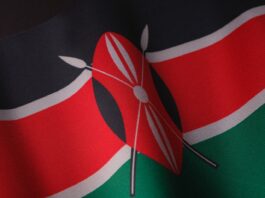NEW DELHI — According to figures released by the UN on Wednesday, India will overtake China as the world’s most populous country by mid-2023. This raises the question of whether India’s expanding, the young population will support economic growth for years to come or become a liability. India has the most individuals in the world between the ages of 15 and 24, with 254 million, whereas China is dealing with an aging population and sluggish population growth. This has raised hopes that India will emerge as a major economic force and global power due to demographic shifts.
Young people in India could be the engine of the nation’s economic growth for years to come, but they also run the risk of becoming a problem if they aren’t properly employed. The economy of India is among the fastest-growing as its population expands, but economists have cautioned that unemployment has also increased.
In order to shift some of its production out of China, where wages are rising and the country’s population of people of working age is declining, tech giant Apple, among other businesses, seeks to convert India into a potential manufacturing center.
According to the U.N. report, India will surpass China in population sometime in the middle of this year by roughly 2.9 million people. According to U.N. estimates, India will have 1.4286 billion inhabitants at that time, compared to mainland China’s 1.4257 billion. Since India last conducted a census in 2011, demographers claim that the limitations of available demographic data make it impossible to determine an accurate date.
Since at least 1950, when the United Nations started publishing population statistics, China has had the greatest population in the world. With a combined population of more than 1.4 billion, China and India account for more than one-third of the world’s 8 billion inhabitants. India’s rise to the top spot in terms of population was once predicted to occur later in this decade. However, a decline in China’s fertility rate and fewer children being born into households has accelerated the time.
India’s rise to the top spot in terms of population was once predicted to occur later in this decade. However, a decline in China’s fertility rate and fewer children being born into households has accelerated the time.
In contrast, India’s population is considerably younger, it has a greater fertility rate, and during the past 30 years, infant mortality has decreased. Nevertheless, according to World Bank data, the nation’s fertility rate has been progressively declining, from more than five births per woman in 1960 to slightly over two in 2020.
Since the country’s declaration of independence 76 years ago, its population has more than doubled. India, which is on track to surpass China as the largest nation in the world, is battling a deepening religious difference, a serious urban-rural gap, severe economic discrepancies between men and women, and the threat of climate change.
When asked about their primary concern when considering population change, 63% of respondents in a U.N. survey of 1,007 Indians cited economic challenges, followed by concerns about the environment, health, and human rights.
The results of the Indian survey imply that widespread public anxiety over the population has crept in. However, population figures shouldn’t be a cause for concern or fear, according to Andrea Wojnar, the UNPF’s representative for India. They need to be viewed as a sign of advancement and development, she continued, “if individual rights and choices are being upheld.”
A “demographic dividend,” or the potential for economic growth when a country’s young population surpasses its share of elderly people who are past their working years, is what many people are betting on India’s expanding number of people of working age to offer it. It is what enabled China to solidify its position as a superpower.
We haven’t been able to fully capitalize on our demographic dividend thus far. According to Mahesh Vyas, director of the Centre for Monitoring the Indian Economy, employment has not increased while the working-age population has increased significantly. He continued by saying that, with the number of jobs being static at 405 million, the nation has struggled to generate more employment over the past six years.
From an underdeveloped country in 1947 to an emergent global power with Asia’s third-largest economy, India has seen a tremendous transition. It is a significant exporter of goods like software and vaccines, and as its high-skilled industries have grown, millions of people have been able to transcend poverty and join a growing, aspiring middle class.
But so too has unemployment. CMIE data from 2022 shows that just 40% of Indians who are of working age are employed. The head of the Population Foundation of India, Poonam Muttreja, agreed that the nation needed to make better plans for its youth.
“This vast population will require a significant investment in skills in order to take advantage of the employment opportunities that will arise in the economy. But we also need to generate more employment for them, she added, noting the need of making investments in education. The spokesperson for China’s foreign ministry, Wang Wenbin, stated on Wednesday in response to news of the U.N. report that “a country’s demographic dividend depends not only on quantity but also on quality.”
“Talent is essential, but so is the population… Wang stated during a briefing that China’s demographic dividend has not vanished, the talent dividend is occurring, and development momentum is still robust.


